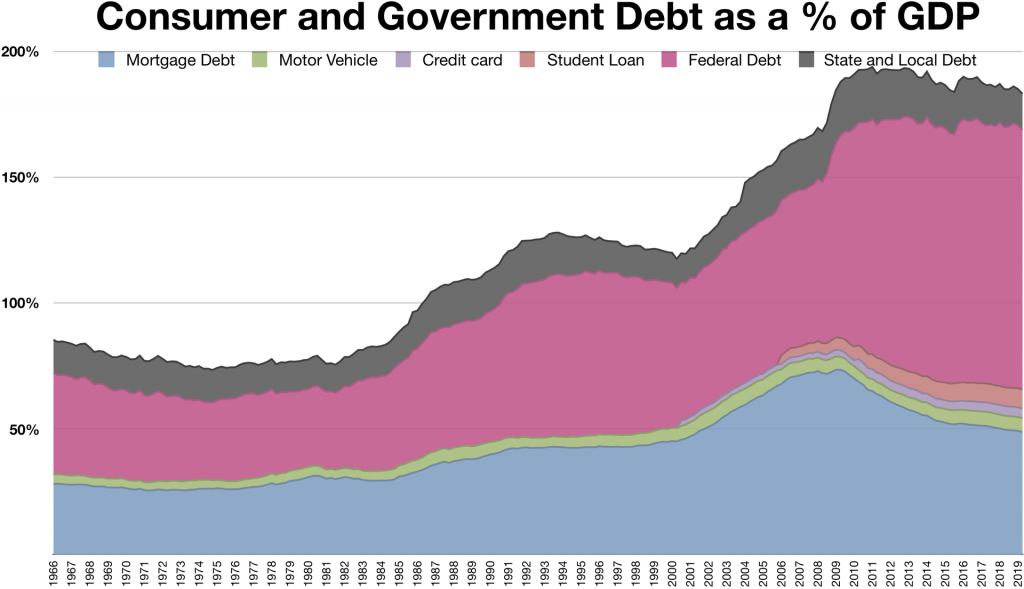Since launching my website and publishing my first newsletter on April 1st, I've received a fair amount of feedback, a bit of casual curiosity, and several fairly serious investment related questions. Two of those concerned the price of oil, and one came from a friend, yesterday, who was wondering how the price of oil could possibly be negative.
Up until yesterday, I could've said that the price of oil had never been negative before and left it at that. Today that would still be true, sort of, but it comes with a caveat. Yesterday, the May futures contract for West Texas light crude oil did, indeed, go negative. That contract expired today, and everyone who "bought" one yesterday, receives a barrel of crude oil and a $10 bill (at least). The money is for nothing and the oil is free, to put a modern spin on the Dire Straits song.
The reason the contract went negative is because, technically, the money is not for nothing. The money was in exchange for the promise to take delivery of a barrel of light, sweet crude oil in Cushing, Oklahoma, today. As you might expect, not everyone can actually do that. What you might not know is that quite a few people who have made that promise cannot actually do that. You'll hear the term "speculators" used to describe these folks. They are financially motivated buyers of commodity contracts, who purchase a contract in the hope that prices will rise, and they can sell it at a higher price. And it's not all gambling. The presence of financial buyers and sellers in the market for physical commodities provides a tremendous amount of liquidity to those contracts and makes it much easier for actual oil producers and refiners to "lock in" the prices at which they will sell (or buy) their raw material at a later date. And at the end of the day, the price of the contract can only really diverge slightly from the value of the underlying commodity, otherwise one of those actual producers or refiners would buy a barrel and leave it in their tank for a few days until they can sell it to somebody for what it's actually worth. The problem yesterday was that, with the contract near expiry, we essentially ran out of real world storage. There weren't any legitimate places able or willing to take another barrel of crude, and there was no shortage of desperate financial holders of the May contract who were absolutely required to dispose of them, at ANY price. As it turns out, they had to pay for the privilege. A stock or an option can only go to zero, but a real world commitment must be honored or otherwise paid for.
When I got the question yesterday, I remembered something about crude oil speculation and futures that I had hypothesized early in my career and never put to the test. I remembered that one of the primary ETFs investors use to track the spot price of crude oil, the USO ($2.81 as of today's close) invests 100% of its portfolio in the front month oil futures contract, and sells the entire portfolio to buy the following month's contract every four weeks. Its sister fund, the USL ($10.14 as of today's close) spreads its bets out equally over contracts spanning the next 12 months, and rolls only the front month into the 13th month every four weeks. When the oil futures curve is in contango (meaning that future oil costs more than now oil), both of these funds are forced to buy fewer contracts every time they "roll" the front month contract into the next one. This negatively impacts the net asset value of the funds, which maintain a financial interest in fewer barrels of oil after the roll than they did before. It's called "roll yield," and it's a cost of doing business for those investors who maintain a long position in a commodity using futures contracts. USO and USL pay the roll yield with their investors' capital, but the USO pays a lot more, because it's rolling 100% of its portfolio every month, while the USL is rolling only 8% of it. In 2009, when the oil futures curve was in fairly severe contango, I hypothesized that you could short the USO, buy the USL, and earn the roll yield without any exposure to the volatile price of the underlying commodity.
I was correct, but I did realize after a few minutes that it's not a "risk free" trade. The problem, of course, is that the oil market has to actually STAY in contango to keep benefiting from the roll yield every month. Whenever it finally snaps back - which is to say, whenever the front month contract actually increases in value and starts to approximate the 2nd month contract, the USO could snap back with a vengeance while basically nothing happens over at the USL. The "roll yield," trade is basically a short volatility trade, where you collect a small fee every month to have the position on and you hope that the USO never snaps back and wipes you out. As a result, I had never put the trade on, until yesterday when I put 20% of my portfolio into it.
There are a lot of reasons to hate ETFs, and I do hate them. As an active investor and investment management professional I've long believed that indexing is not the panacea for individual investors that the academics would have you believe. But that's a different rant. The worst thing about ETFs and the relevant characteristic to this blog post, is that they market what they "track," as opposed to what they "own," and most investors don't really understand the difference. They buy the USO because they want to "track" the price of oil. They own the front month oil futures contract in size. The USO actually owned, as of close yesterday - about 25% of the outstanding June futures contract. The USO, which CANNOT TAKE DELIVERY OF OIL, has PROMISED TO TAKE DELIVERY OF 25% OF ALL THE OIL IN TEXAS AND OKLAHOMA THIS JUNE. The prospectus uses different language, but that's (more or less) what it means. The investors who punt a few hundred dollars at the USO don't understand the difference. They think they're buying the price of oil, and they aren't. It breaks my heart to see that individual investors are buying USO in record numbers (https://robintrack.net/symbol/USO) because I know that few of those understand that the USO will destroy a tremendous amount of value when they try to roll a full 25% of the outstanding June contract into July. And unfortunately, I know that it's those investors who are supporting the price of the USO at levels well above it's actual NAV and creating what basically does amount to an opportunity to make a profitable trade, without assuming any risk.
These are odd times, and odd things are happening. Even one month ago I didn't think the front month contract could go negative. But it did. When I looked into the roll yield trade again yesterday I quickly calculated what would happen if the USO were to roll it's 100% long June Oil position into July at prevailing prices. They were originally scheduled to do that over the course of three days, May 5th to May 8th. Spoiler alert - it would destroy quite a bit of value - so I was about ready to hit the sell button and put the trade on, but there's more. The folks at USCF (the guys who sponsor the USO and USL ETFs) aren't completely oblivious. They read the wall street journal, too, so when this article was posted on Friday, they filed with the SEC to notify their shareholders that no longer would the USO track solely the front month futures contract, but it would own 80% of the June contract and 20% of the 2nd month, July. I wondered what would happen if they made that change in it's entirety yesterday around midday, (the June contract was acting poorly yesterday, too) and I came up with a back-of-the-napkin NAV estimate around $3.55 for the fund, which was still trading north of $3.80. Again, all of this is public information, but the individuals buying USO on Robinhood cannot reasonably be expected to get notified every time USCF files an 8-k saying they've DRAMATICALLY ALTERED THE MAKEUP OF THEIR FUTURES PORTFOLIO IN ORDER TO MAKE A FRAGILE GUARANTEE OF THEIR FUND'S SURVIVAL.
Long story short (ha.), I sold USO at $3.80 thinking I was selling $3.55 for $3.80, and I bought USL in roughly the same amount, so that I wouldn't have any exposure to general price movements across the curve. It turns out that USO ended the day with a NAV of $3.46. I made money, but I don't feel great about that. Unfortunately, the real test is still to come - USO destroyed almost $0.30 (or more, depending on how much of the June contract blood you think is on USO hands) of fund value yesterday, trying to move 20% of its portfolio one month into the future, so what will happen on May 5th, 6th, and 7th, when the other 80% of the portfolio was to get rolled? An already bad situation can only be made worse by the fact that USO actually publishes its trading schedule, and has promised to buy and sell its oil promises on specific dates. So - while I would normally not recommend trying to "arbitrage" the roll yield disparity between the USO and the USL, I felt that the fund found itself in such an abnormal and dire situation that there was sufficiently little risk it could extricate itself before the curve returns to normal.
They felt so too. Last night, the USO suspended new creation baskets for shares in the ETF. Meaning, they finally admitted, "owning 25% of the June contract is too much, we can't really buy more to support new investors, anymore." Refreshing, but a little late. The June contract got hammered today. It ended the day at $13.12, down from $20.43. At first I thought other investors and speculators were doing what I was doing, and maybe they were. But towards the end of the afternoon, the USCF made another announcement on behalf of the fund. They sold half the June position in order to put 5% of the portfolio into the August contract, and another 35% of the portfolio into the July contract. Unfortunately, that means they're paying the roll yield TODAY. And it's no small number. A $3.46 portfolio of 80% June WTI Crude and 20% July WTI crude should've closed today with a NAV around $2.28. If they rolled the full 40% of assets they intended to roll at today's closing prices, that would cost the fund another $0.50, and they could report a NAV at day's end of $1.78. The USO closed at $2.81. I'm still short, and I still don't feel good about it. Actually I had to short more today to keep the hedge in place; USL did not decline anywhere near as much. And I don't even have to care if the curve stays in contango, the roll is happening NOW.
The good news (depending on how you look at it) is that I think they've "saved" the fund by rolling it all today. They've paid more than a pound of flesh to diversify into 40% front month, 55% second month, and 5% third month contracts, but they've created a sturdier portfolio and set the precedent that they will act nimbly in times of crisis to prevent a situation where the fund finds it cannot roll a front month contract that's effectively worthless. In other words, I don't think that USO will be de-listed. But I will caution anyone who holds a few shares - if you think that USO will "snap back" to $10 or higher because, well hey, that's where it was when we all stopped driving at the beginning of March and created this mess, you'd be wrong. In order to survive the fund has re-configured its portfolio and it tracks a financial interest in far fewer barrels of oil, now, than it did at the beginning of March. Then, a 10% increase in the price of oil was $1 in value to USO shareholders. Today it will be a little less than $0.20. And if you're hoping that contango will end and the USO will roar back, well, they've dramatically reduced their exposure to that, too. They had to.
Several of you will be wondering what to do, today? What to do if you own USO? Well... it's complicated. I'm not going to keep this position on forever (or even very long for that matter), but the troubles aren't over yet. Certainly I do not think that the supply glut can be ameliorated before May 8th, but the administration and everyone else in the world is trying. The Texas railway authority is convening to try to mandate a production cut across the state. Saudi Arabia has already agreed not to send as much oil our way in June and July as they did in May. The administration has opened the strategic petroleum reserve to take on excess supply. So - I don't think that the USO fund will collapse. But I think it's worth less than $2, and it closed today at $2.81. Unfortunately, the situation is so bizarre and it's unfolding so fast that I can't really recommend selling USO tomorrow morning until I know what price USO is trading at tomorrow morning and how much of their portfolio they were able to roll today. What I can say is this: If you aren't involved yet, please, please, please, don't just buy USO because it seems like oil has to go higher.
For now, I guess I agree with this guy. Stay away from USO.
Disclosure: I am short USO, and long USL. I wrote this blog post myself, and it reflects my personal opinions. I am not being compensated for it, and I have no professional relationship with the funds' sponsor, USCF, or their parent company.















